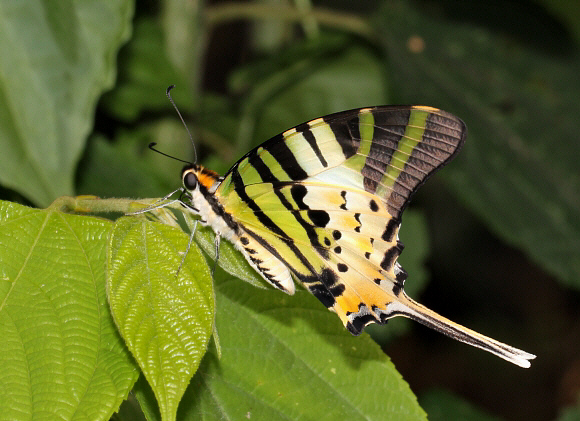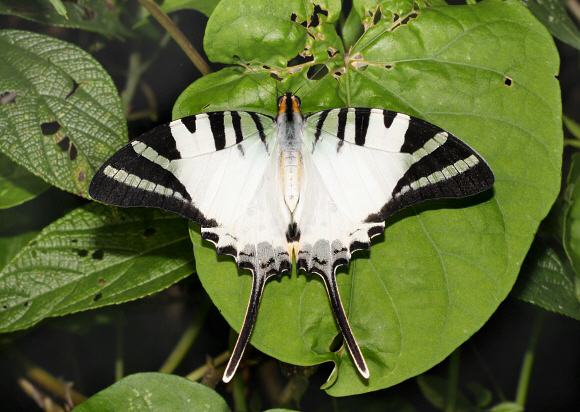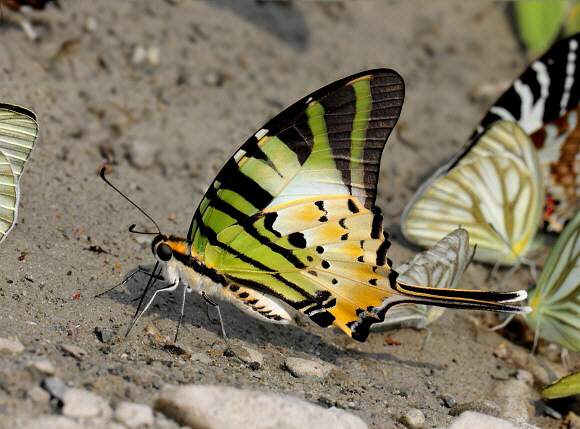
Introduction
This beautiful species was for many years placed in a genus of its own – Pathysa, but taxonomists have since decided that it should be transferred back to its original genus Graphium.
The genus Graphium is widespread in the Old World, with 35 species in the Afrotropical region, 14 in the Oriental region, 6 in the Holarctic (south and west China), and 20 in the Australian region.
Almost all of the Oriental and Australasian species are characterized by the presence of a pattern of translucent green, turquoise, or yellowish ‘windows’ in their wings. Arguably the most beautiful and unusual of all the Graphium species is weiskei from Papua, which is patterned with vivid pink and green on a dark brown ground color. There are several species, however, such as antiphates and aristeus which have pure white uppersides, marked with prominent vertical black stripes. A few including antiphates, aristeus, and the African policenes have very long sword-like tails. Some of the Oriental species e.g. codrus, cloanthus, and certain races of agamemnon have short tails, but in others including sarpedon, doson, and eurypylus the tails are greatly reduced or absent.
Graphium antiphates is a widespread and common species, found from India to south China; and south through peninsular Malaysia to Borneo, Sumatra, Java, and Bali.

Habitats
This species is found in primary rainforest at elevations between sea level and about 600m.

Lifecycle
The caterpillar reportedly feeds on Annona, Desmos, and Uvaria, all members of the Annonaceae.

Adult behaviour
Males often migrate along river courses, where they aggregate with other Graphium species at patches of damp ground to filter-feed, using their proboscises to suck up water from which they extract sodium and other minerals. They constantly pump water through their bodies, expelling the surplus from the anus, using it to dissolve further minerals from the ground, which they re-imbibe. They quiver their wings constantly while feeding, and habitually face into the breeze. Late in the afternoon when temperatures drop males can sometimes be seen basking with wings outspread on tree foliage or bushes.
